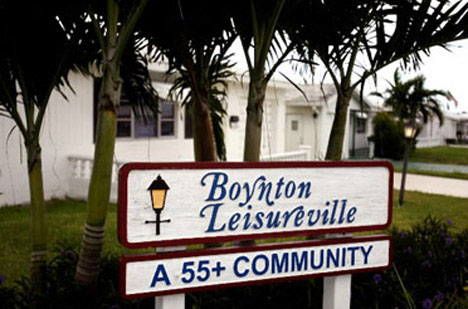As summer draws to a close, we prepare for some obvious changes: shorter days, cooler temperatures, a significant drop in ice cream consumption. But another change takes place as well, something whose consequences most of us don’t ordinarily think about. Grown-ups return to work, where they’ll toil alongside other working-age people. Children go back to their schools, neatly separated by grade. Millions of young adults will pack their bags for college, where they’ll live and work almost exclusively with their exact peers.
In other words, we’ll be sorting ourselves out by how old we are.
This may feel like the natural order of things, with multigenerational family vacations and teenage jobs a brief summer exception. But for a number of sociologists and other researchers, it reflects a reality about American life that is cause for worry: Our society, they say, has become far too segregated by age.
Senior citizens live in nursing homes where they mainly see other very old people, while new retirees now often buy condos in age-segregated communities where younger people aren’t even allowed to live. Adolescents, who in a previous era might have spent significant time around adults while farming, apprenticing, or helping with the family business, spend their after-school hours on social media, talking mostly to one another. It is possible, today, for a middle-aged office worker to go to sleep on a Friday having interacted all week with not one person more than a decade older or younger; the same could well be true for her daughter in college, or her parents living at Pleasant Oaks Village. According to one study, Americans over 60 said that only a quarter of the people they had discussed “important matters” with during a six-month period were younger than 36; if they didn’t count relatives, the number dropped to an astonishing 6 percent.
On some level age segregation makes sense: People of different ages do tend to want some different things. College students want to stay up late and pair off with each other; seniors understandably crave peace and quiet. But it also has costs: It can sow distrust and prejudice between generations, and robs people of the chance to learn from those younger and older than them. Kids, the research indicates, develop important skills by interacting with adults and making friends of different ages, while the elderly have been shown to benefit from spending time around children. There is also evidence that age segregation can affect the economic well-being of a community by making people from different age groups blind to each other’s needs.
The research on age segregation in modern America is still relatively young, but it has attracted interest as part of a broader trend in the social sciences. Increasingly, said Richelle Winkler, a demographer at Michigan Technological University, researchers are taking inspiration from groundbreaking work on racial segregation, and looking at the unseen costs of divisions in society based income and educational attainment. Winkler’s research shows that some parts of the country are segregated by age in much the same way other parts are segregated by race or ethnicity.Read the rest of the story HERE.
If you like what you see, please "Like" us on Facebook either here or here. Please follow us on Twitter here.






1 comment:
This is why the Bishop of my parents church (kind of like a pastor of a congregation) has been asking people like my dad, who is 80, and another lady who told my sister she is 84, to teach the youth Sunday School classes. The Bishop thinks it's important for the youth to get to know the older generation better, and I think he's right. Choosing the younger, cooler people is more common, but there's no doubt kids can learn a lot from the older generations....
AZ
Post a Comment